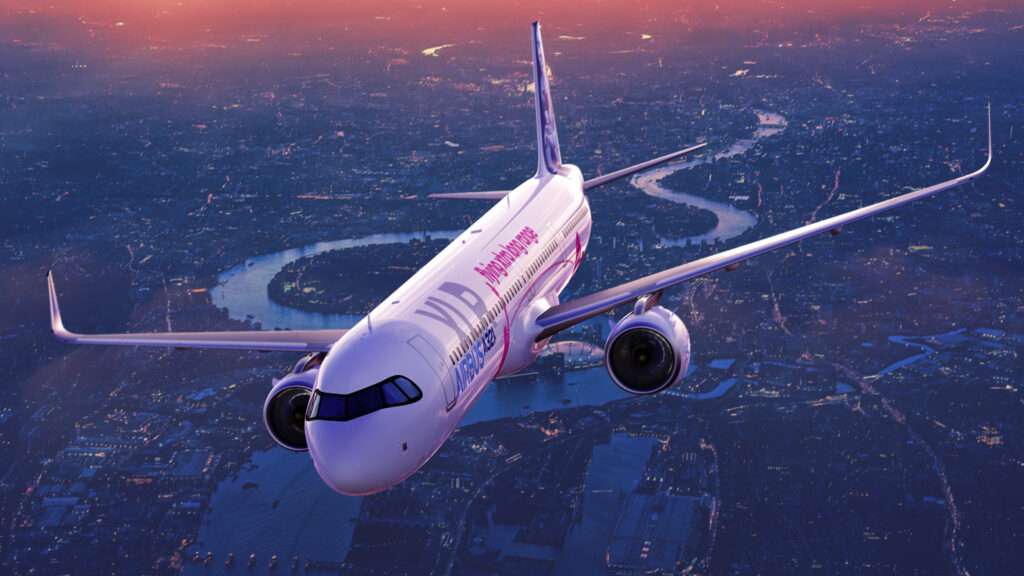The Airbus A321XLR, the manufacturer’s longest-range single-aisle aircraft, is nearing the final stages of its certification and flight-test journey.
The technical prowess of the new long range variant is quite impressive. Airbus is taking a sound approach to ensure a smooth transition for its launch customers.
A321XLR Development Team
For the past four years, Airbus has embedded Customer Services personnel directly within the A321XLR development team.
This close collaboration fosters a multi-functional environment where real-world airline experience can be directly incorporated into the aircraft’s design and component selection.
The focus is on maximizing the aircraft’s availability once it enters airline service. This proactive approach ensures that potential in-service issues are identified and addressed early in the development cycle, leading to a more mature aircraft and supporting procedures.

After Delivery: Ongoing Support for Airlines
The commitment to customer success extends well beyond the initial deliveries. Airbus will continue to provide ongoing support to launch operators through:
- Regular updates to technical documentation ensuring airlines have the latest information for maintenance procedures.
- Global availability of spare parts to minimize downtime due to part shortages.
- Comprehensive training programs for pilots, maintenance crews, and ground operations personnel.
- Day-to-day operational support to help airlines integrate the A321XLR seamlessly into their fleets.

Type Certification Documentation
A crucial aspect of any new aircraft’s entry into service is Type Certification, which ensures it meets stringent airworthiness standards.
This process requires the manufacturer to provide a comprehensive set of documents called “Instructions for Continued Airworthiness” (ICAs).
These ICAs serve as the foundation for the airline’s approved maintenance data and outline essential procedures for maintaining the airworthiness of the aircraft throughout its operational life.
ICAs: Tailored for the A321XLR
While the A321XLR shares many components and procedures with other Airbus single-aisle aircraft, its extended range capabilities necessitate new ICA documentation for several key features:
- New main landing gears designed to handle the increased weight of the aircraft.
- Modified wing flaps optimized for long-range performance.
- Integrated long-range rear center fuel tank (RCT) requiring a completely new fuel system.
- High-capacity water and waste system to accommodate longer flights.
- Extended belly fairing for improved aerodynamics.
- Increased maximum takeoff weight necessitating adjustments to maintenance procedures.

New Belly Fairing
Let’s take a closer look at the A321XLR’s new extended belly fairing. This design incorporates a novel material to enhance protection for the unique rear center fuel tank RCT in specific crash scenarios. In contrast, the belly fairing on the A321neo serves primarily as an aerodynamic feature.
This functional difference translates into revised ICAs for the A321XLR. The structural repair manual (SRM) coverage for the belly fairing will reflect its new role in protecting the RCT.
Additionally, unlike the A321neo where belly fairing repairs are often handled autonomously by airlines, the A321XLR’s belly fairing may have limited on-site repairability due to its safety-critical function.

The maturity teams at Airbus proactively address these scenarios by outlining potential damage limitations and establishing repair procedures within the SRM.
In situations where on-site repair is not feasible, Airbus’ service organization will pre-stock spare parts and tooling at strategic locations around the world, ensuring minimal downtime for airlines. As a final safety net, Airbus can directly source parts from its production lines if necessary.
Conclusion
By prioritizing customer needs throughout the development process, Airbus is ensuring a smooth and successful entry into service for the A321XLR.
This collaborative approach paves the way for airlines to maximize the potential of this game-changing long-range single-aisle aircraft.

Click the banner to subscribe to our weekly newsleter.

Click the photo to join our WhatsApp channel so then you can stay up to date with everything going on in the aviation industry!









